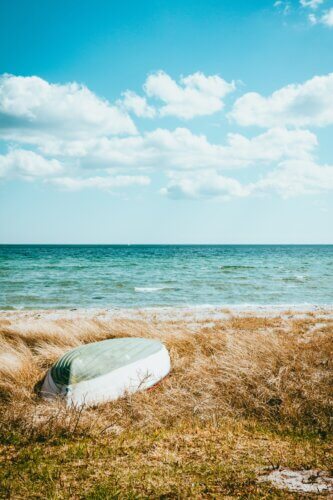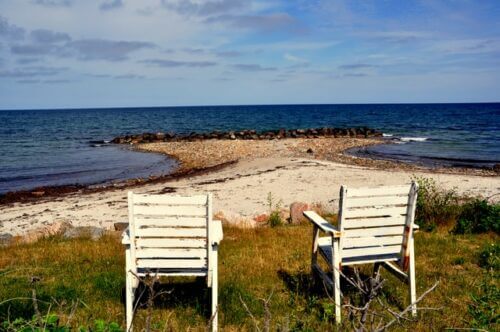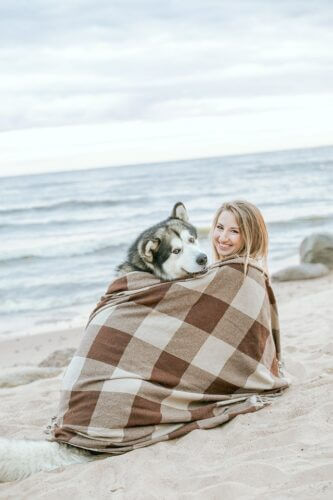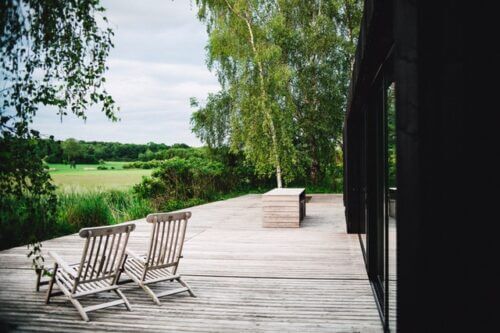Denmark is a popular camping destination and is characterised by beautiful landscapes. The coast in particular, which makes up a large part of Denmark, is a great destination for excursions.
When camping, you are not only close to nature, but can also take a break from the hustle and bustle of everyday life. Families with children or dogs often like to choose this type of holiday, which is comparatively inexpensive.
However, there are differences to other Scandinavian countries when planning your holiday. Denmark is an exception in the north, especially when it comes to the legal situation regarding wild camping. Find out what exactly you need to consider when planning your holidays and how to find the perfect campsite or holiday home here.
Is wild camping allowed in Denmark?
In contrast to Sweden, Finland and Norway, wild camping is not permitted in Denmark. At least free camping on public land and free standing with mobile homes is prohibited. The so-called Everyman’s Right does not apply here to the same extent as, for example, with camping in Sweden, where wild camping is legal almost everywhere.
Danish nature campsites: the legal alternative

However, there is also a legal way to camp close to nature and almost free of charge. The Danish state has authorised over 200 forests where free camping is permitted. However, motorised vehicles are not permitted here.
There are so-called nature campsites. These are shelters where you can stay overnight for one or two nights.
A distinction is made between small and large campsites (“lille lejrplads” and “stor lejrplads”). On the former, only 5-8 tents are allowed on one site at the same time.
The large campsites, on the other hand, are primarily for larger groups, for example scouts, school or club groups.
Camping on the Danish coast
Thanks to its special location, Denmark has access to both the North Sea and the Baltic Sea. The Danish mainland is not just a peninsula, but the Danish islands are also well connected and accessible. Even the capital, Copenhagen, is located on an island in the Baltic Sea.
Even though you are never more than 50 kilometres from the sea at any point in the country, the coast itself is one of the most popular camping regions. You will find various campsites there, some of which even have their own beach access!
Camping on the beach
As wild camping is prohibited, it is generally not possible to sleep directly on the beach. However, you can switch to campsites at the beach. Those with a sea view can be a little more expensive, but it’s worth it. You’re only a few metres away from the water and can hear the sound of the waves at night.
Holidays at the Danish Baltic Sea
The Danish Baltic Sea is particularly popular because it is home to the islands of Zealand, Funen, Bornholm and Lolland. The Baltic Sea is also particularly popular with families and campers who love to go swimming.
The sea tends to be calmer and the climate milder than in the North Sea. In terms of landscape, you will find steep slopes and cliffs as well as fine beaches. The famous Dueodde beach on Bornholm is particularly worth mentioning here. Its sand is so fine that it used to be filled into hourglasses.
Holidays at the Danish North Sea
Anyone travelling to the North Sea must expect that they will not always have access to the water. Low and high tide have a strong influence on the daily routine here. In a rhythm of just over six hours, the sea recedes up to 40 kilometres or, conversely, flows back to the beach.

This exposes the Wadden Sea, a very special ecosystem that is under special protection as a World Heritage Site. So if you don’t just want to swim, but also go mudflat hiking, head to the North Sea.
Another thing that many North Sea campers appreciate is the sometimes rough sea. The conditions here are ideal for surfing. The wind, waves and high salt content provide for an intense experience.
The best time to go camping in Denmark
Many campsites are open all year round. Thus, nothing stands in the way of winter camping. Overall, however, the season runs from May to October. Peak season is from June to August.
If you want to use the summer months for swimming, you will hardly be able to avoid travelling during the peak season. If you are a little more tolerant of the cold, September is a good time to go as well, as tourist areas are emptier and prices are lower.
Winter camping is your thing? Then we recommend a caravan or heated cabin. Make sure that the waste water tank can also be heated, as freezing water can cause serious damage to your motorhome.
Even as a hard-boiled traveller, you should make sure to have the right equipment. Sleeping bags with a comfort range of at least -10°C and a warm, thick sleeping mat should be the minimum.
Camping in Denmark with a dog

A holiday in Denmark is an experience for dogs as well. Wide beaches and forests invite you to go for long walks. However, there are a few things to bear in mind, and not just when entering the country.
Dogs are not always allowed to run free everywhere, so please inform yourself about the applying rules.
From 1 April to 30 September, i.e. throughout the camping season, dogs must be kept on a lead on beaches. If you are a winter camper or have rented a cosy holiday home, you can also let your dog run free on the beach.
Dogs must be kept on a lead in forests all year round, but there are exceptions. Special areas are fenced off and accessible to dog owners. Dogs are allowed to run free here and let off steam to their heart’s content. Many campsites are dog-friendly and you can often even take your dog with you at no extra charge.
Rent holiday homes
If you prefer to sleep in a fixed bed, you can rent a holiday home. There are options that are located directly on campsites as well as those that are a little more private.

The facilities vary greatly. From camping cabins with bunk beds, a table and wardrobe to entire houses in the countryside with a whirlpool, everything is available.
Travelling to Denmark
By car or motorhome
When it comes to camping, most travellers choose to travel by car or motorhome. This offers the advantage that your own camping equipment can be easily transported and you are mobile on site.
By train or bus
However, it is also possible to hire a fully equipped motorhome at your destination if you are travelling by bus, train or plane. Travelling by train is particularly straightforward and is especially recommended if you are renting a holiday home and want to stay in the region. If you book early enough, it can even be cheaper than travelling by car and it’s also less stressful.
The Europe Camping Key – Highly recommended
You will need the Europe Camping Key at many Danish campsites. It costs around 16 euros (13 GBP) a year and makes checking in much easier, as all the important data is stored on your card. It also includes liability insurance.